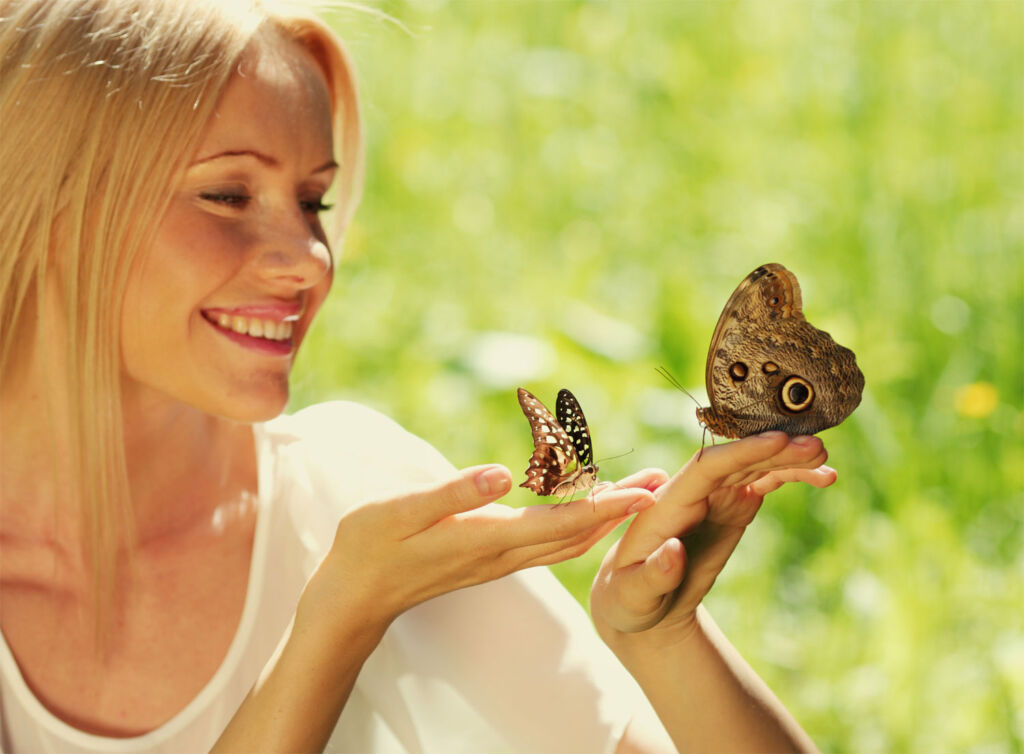
Garden Wildlife Week is a fantastic opportunity to celebrate the ecosystems in people’s gardens and explore ways to help them flourish. In this article, we look at ways to attract everything from Bats to Toads into your garden, and you’ll be pleased to know it is far more straightforward than you would expect.
Wildlife is essential in maintaining a balance in nature from an ecological, economic, investigatory, and biodiversity standpoint. Because of habitat loss, climate change, and pesticides, species such as stag beetles, hedgehogs, bats, song thrushes, and sparrows decline in the UK. But they can find refuge in people’s gardens, which can act as mini nature reserves.
Clever techniques such as building ponds, creating compost and carefully choosing your garden plants are among the activities that will draw wildlife to your home.
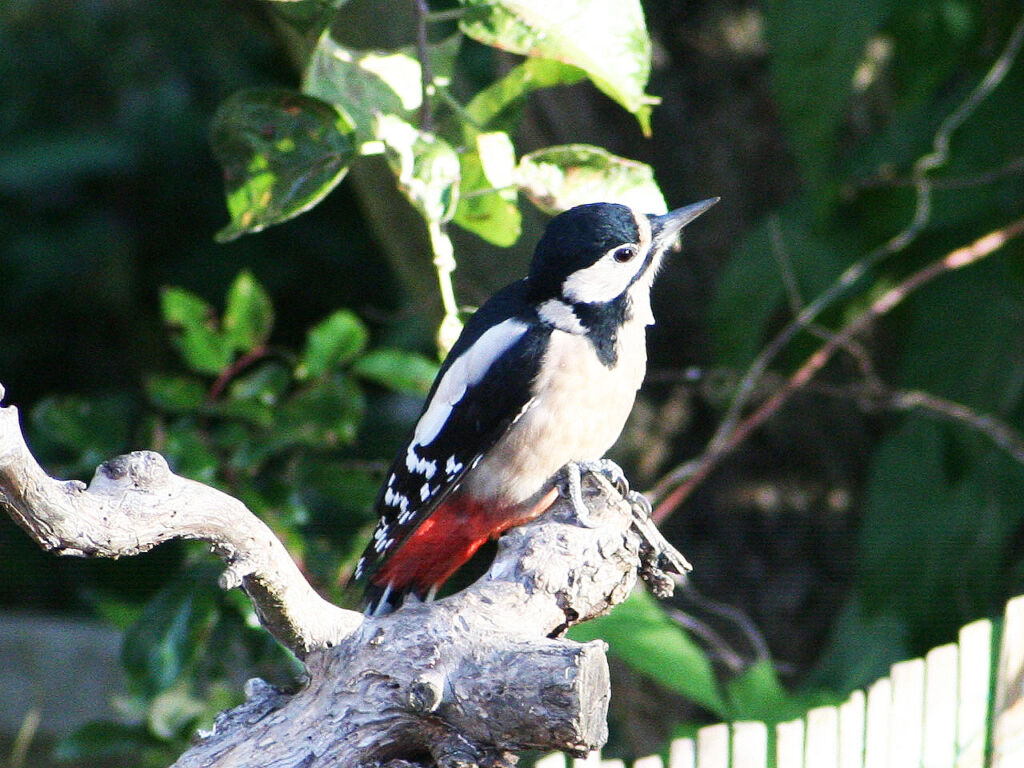
How to attract birds into your garden
Making a garden a bird-haven involves taking care of three key things – food, water, and shelter. The first thing you thus need to do is install some bird feeders. These feeders encourage birds to stop by the garden and get the food they’d have to search vastly in the wild for.
Some of the foods you can avail to them include suet balls, which robins, long-tailed tits (below), and blue-tits love. Sunflower hearts are another viable option. They’re rich in protein and a favourite among robins, siskins, and finches. Niger seeds, mealworms, and peanuts would also be perfect.
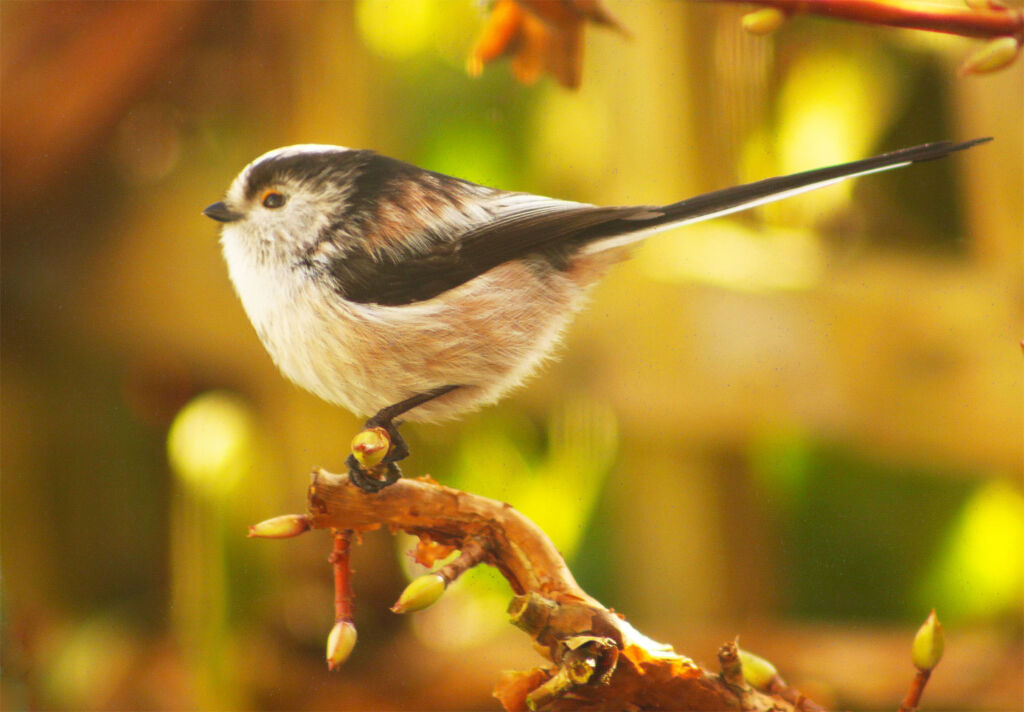
Next, you need to provide fresh water to the birds. They use water not only for drinking but also for bathing. A bowl of water or a birdbath would suffice.
Finally, a place to nest will greatly determine whether birds would love spending time in your garden. You can buy nesting boxes which you should install in a safe place for the birds to nest.
You can choose from open-fronted nest boxes, which are ideal for wrens and robins, classic small-holed nest boxes that serve a wide variety of birds, or sparrow terraces that are perfect for sparrows that breed in colonies.
Birds have a varied diet so try to plant a selection of different shrubs and flowers which will produce berries, seeds and nectar. The best place to plant them is under dense foliage as this will provide some shelter and attract insects which is another thing birds love.
Here are some of our top choices:
- Rowan
- Honeysuckle
- Viburnum Opulus
- Holly
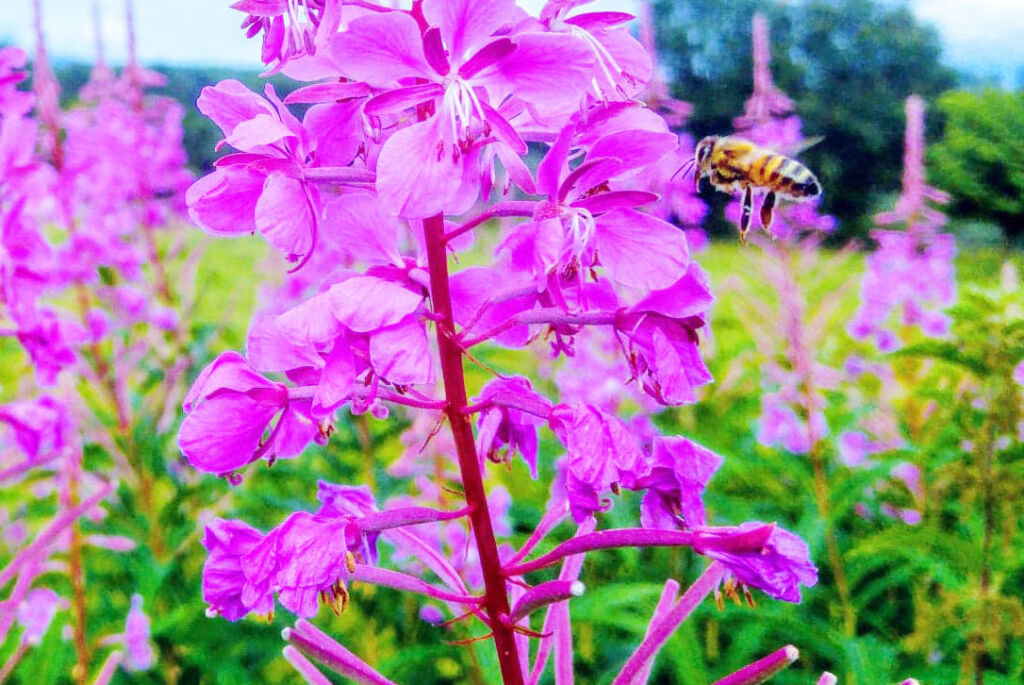
How to attract bees into your garden
Bees are a must-have in any garden. Over the years, we’ve written multiple articles explaining why bees are amongst the most vital species on the planet and having them in the garden is a privilege.
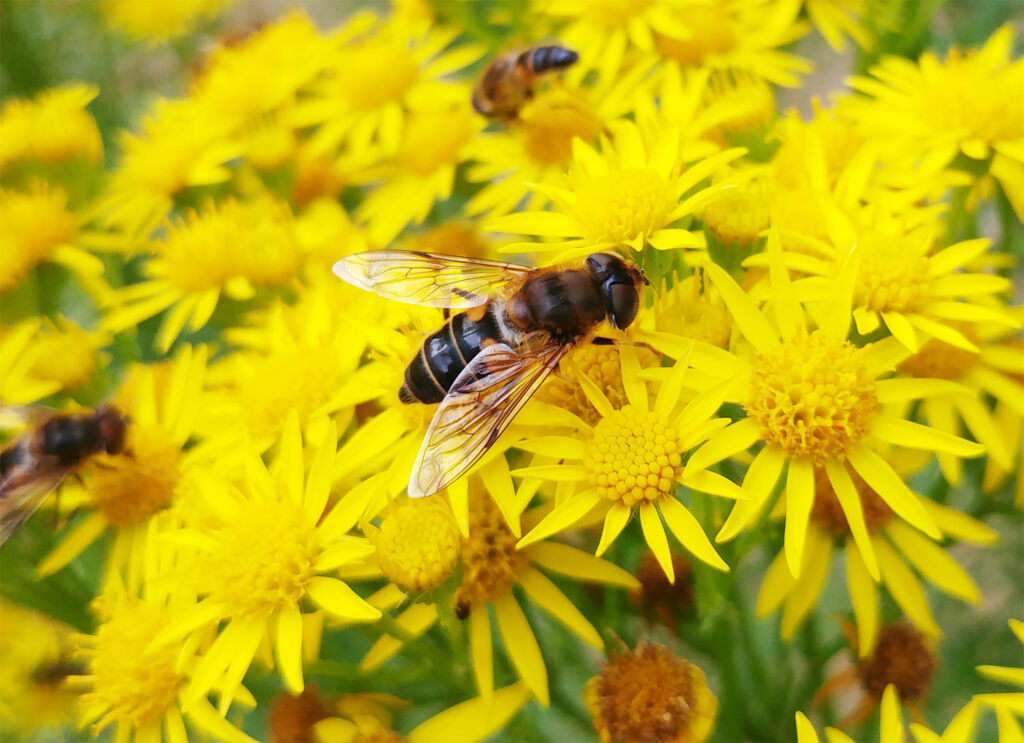
The best way to attract bees is to have the right pollen-producing flowers in the garden. Colours play a big part in attracting bees, and yellow, purple and blue flowers and plants can act as a magnet for them. Keep this in mind when you’re looking to plant some seeds or paying a visit to the local nursery.
Some simple ways to bring bees into the garden:
- A simple way to attracts bees is by offering them a home and an easy way to do this is with a bee brick, you can read more about them here.
- Try to plant single flowers, and double flowers can cause problems for bees when it comes to them getting nectar and pollen.
- Where possible, try to ditch using pesticides.
- One thing people tend to forget is pollinators need to drink. Therefore pop a shallow dish out with water and stones for them to safely sit on, which will be a safe water source for them to get refreshed.
- Bee-friendly plants include Dahlias, Asters, Sedums, Cornflower and Heather.
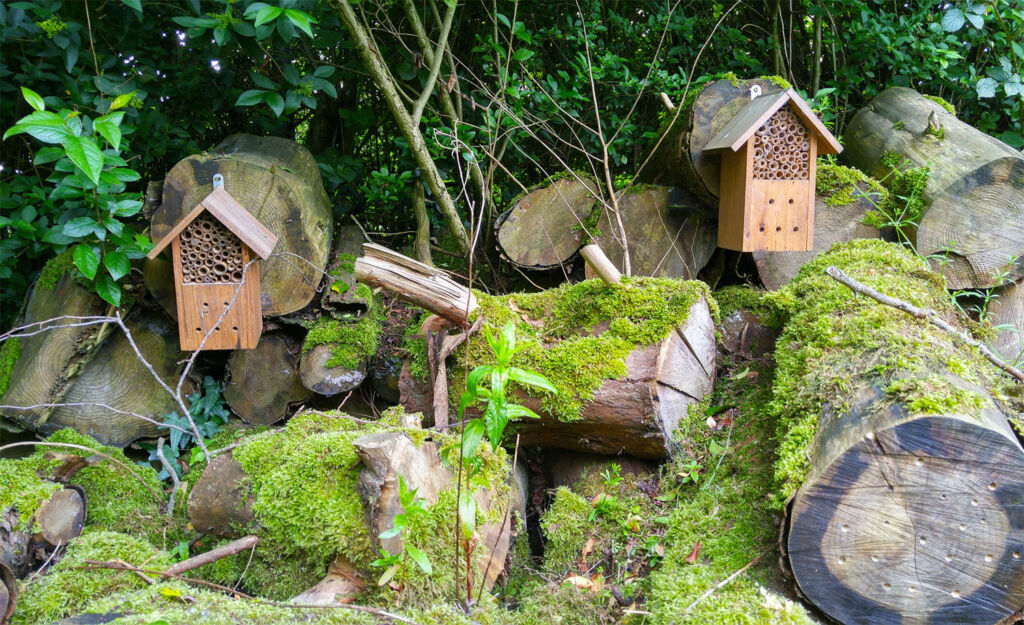
Bringing the other animals in
What about other animals? What can you do to create a haven for them? Same three things as the birds – food, water, and shelter. For food, you can buy special feeds for different animals you wish to attract. For instance, you can get special feed for hedgehogs from garden suppliers, while a bag of unsalted nuts and seeds, root vegetables, and fruit would feed badgers well.
A pond, or any other water feature, will not only provide water but also diversify the ecosystem in your garden. You can keep fish in a pond plus attract frogs and insects such as dragonflies to your garden. These same instalments can provide shelter for these animals as well, making them not just regular visitors but also inhabitants.
You can also have compost and piles of deadwood. These are magnets for grubs and beetles that, in turn, attract larger foragers in your garden.
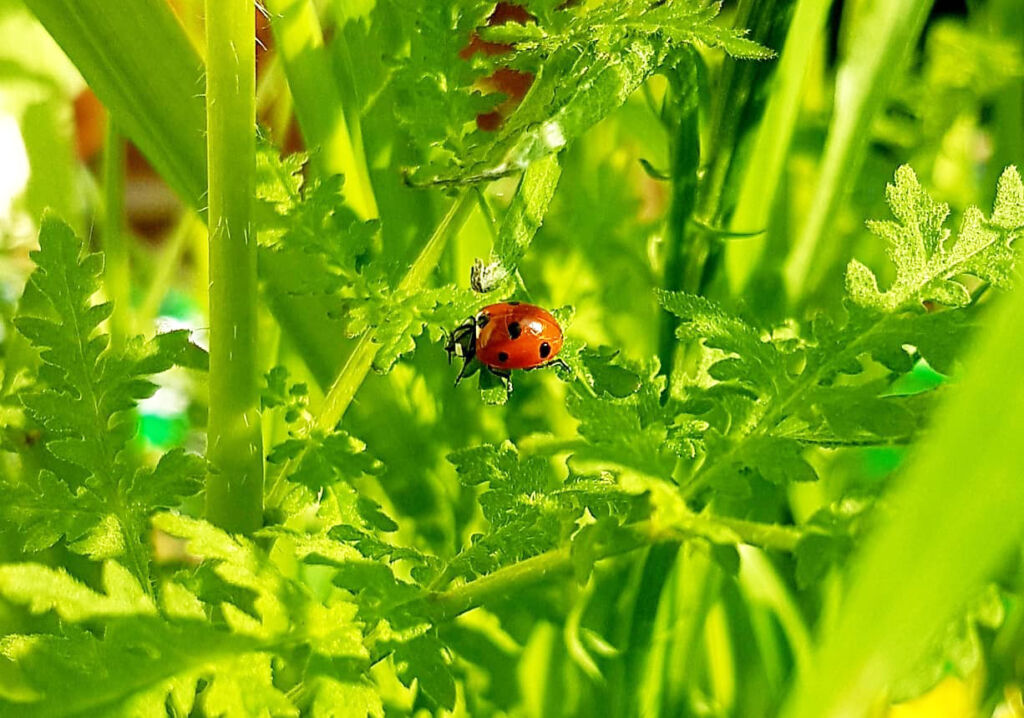
Ladybirds
Ladybirds or Ladybugs are tiny helpful powerhouses you want in your garden. Most people think they only come in red with black spots; in fact, they come in various colours, including black, orange, yellow and even pink!
Ladybirds are great at ridding your plants and flowers of unwanted pests. They enjoy snacking on aphids, fruit flies, mites and thrips, pretty much all the tiny critters you don’t want.
Why they are called Ladybirds
Their name is said to come from the Middle Ages when farmers prayed to the Virgin Mary, who they simply referred to as Mary (Our Lady), for help in protecting their crops from aphids. History tells us that a swarm of insects arrived to save the crops; these were what we know today as ladybirds.
The Virgin Mary was often depicted at that time in paintings wearing a red cloak, and the spots on the ladybirds are said to represent her seven joys and sorrows. From then, they were referred to as “Our Lady’s beetles”, which latterly evolved into the name ladybird.
A couple of facts about Ladybirds
Did you know that ladybirds hibernate? They will hibernate for anything up to nine months living off their fat stores. Another thing you might not know is they are surprisingly nimble. Frequently you’ll see ladybirds either static or flying. However, give them somewhere they feel safe such as a pesticide-free planter filled with tall wildflowers, and you’ll see them running around, up and down stalks like mini sprinters!
Like other wildlife we’ve featured, ladybird numbers are declining, so once again, the onus is on all of us to help. There are several pollen plants that are great at attracting ladybirds. Yellow and white one’s such as Angelica, Cosmos and Fennel are sure-fire winners.
- Plant decoy plants that will attract aphids away from your desired bug-free plants until the ladybirds remove them for you. Aphid attracting decoy plants could include Early Cabbage, Marigold and Radish.
- Ladybirds or ladybugs as they are also known, eat two things: insect pests and pollen, and there are several pollen plants that ladybirds like, including Calendula, Chives, Cosmos and Marigold.
Bats
Bats might not be the most obvious things to attract, but hear us out. Like hedgehogs, bat species are in decline, so you’ll be doing them a huge favour by helping them. In addition to this, they’re one of the most efficient and safest ways to control harmful insects. If you’re wondering just how effective they can be, just one small bat is capable of eating around 1200 (yes, twelve hundred) insects in an hour!
If you want to attract bats, a great way to start is by offering them a nice home. They’re quite easy to come by, and you’ll find numerous places to buy a bat house close to you via a quick search on the internet. Or, for the personal touch, you can build one yourself and again, instructions on how to do this can be found online. The best time to erect a bat house is in the winter, as bats tend to start looking for a home in early spring. Here are some more tips which will help:
- If you are building your own bat house, make sure you use non-toxic woods such as cedar or plywood. Keep the surface rough as this helps bats to climb in and out.
- Place in a warm, sunny position for warmth
- Keep it close to a freshwater source (pond, stream)
- The best place for a bat home is away from anything too distracting. High on the side of a building, up a tree or even upon a pole will do.
- Another way to attract bats to your garden is by planting night-scented flowers such as Evening Primrose and Yucca.
Frogs
Frogs, too, are a great way to control unwanted insects in the gardens, which will be a huge benefit to your plants and flowers in the long term. Some simple ways to attract them includes:
- Make some toad and frog houses; these don’t need to be fancy ready-made constructs. Overturned flower pots that have been lightly buried in the soil is more than adequate as, luckily, toads and frogs aren’t overly fussy!
- As we’ve mentioned previously, pesticides are far from helpful in keeping the wildlife you attract safe and healthy. Frogs, in particular, are highly sensitive to chemicals, so try to keep things natural in the garden using compost.
- Keep pets away from the areas where you are trying to attract frogs and toads.
Toads and female frogs usually spend winter on land, under rockery stones (or log piles). Recommended rock plants are Aubretia, Hardy Geraniums and Sedums.

Hedgehogs
It’s common knowledge that the population of hedgehogs in the country is declining at an alarming rate. Fortunately, people up and down the country understand this and are doing their very best to have the honoured company of this lovely animal.
Like shrews and voles, hedgehogs are insectivores and can eat like you wouldn’t believe. In fact, an adult hog can eat up to 200 grams of insects every night! Hedgehogs are absolutely brilliant at controlling pests, and by following a few simple rules and with a dose of luck, you could be drawing these delightful creatures into your garden. Here are some ways to help make it happen:
- Although for some, the following might be a little difficult, it is recommended that you leave some parts of the garden to grow wild and add some twigs along with some dead vegetation which will give them the incentive to build a nest.
- Leave a bowl of water in the garden, which has a shallow lip. Contrary to what many people think, milk is one of the worst things you can leave out as the hedgehog has a delicate tummy, and an upset stomach can cause them to dehydrate and die. Try to top up the water regularly and make sure it is clean.
- Worse than leaving out milk is using slug pellets as these too can be fatal for them.
Hedges are an incredibly useful thing to have in the garden. Both birds and hedgehogs use them as a safe highway to move from one area to another. Hedge species with large deciduous leaves are a big winner as hedgehogs will collect them to help in building their nests. The best hedges for hedgehogs are Beech, Buddleia, Berberis and Pyracantha.
Shannen Godwin, a spokesperson for one of the leading plant and bulb companies in the UK, J Parker’s, says, “The Garden Wildlife Week is not about the big milestones you have or can achieve in the conservation of wildlife. Rather, it’s about the little things you can do. This starts at home.
Simple activities such as growing your own plant and becoming a wildlife watcher can help contribute to the conservation and preservation of wildlife nationally, slowing down the risk the endangered species face. If you want to attract wildlife, you can learn how you can make a home habitat in your garden.”

Help wildlife by ‘Walking the Walk’ and not ‘Talking the Talk’
I am a big believer in setting an example and not just “talking the talk”. Like many Brits, we opted to leave a built-up urban area for a traditional village in the countryside. We were fortunate to have another property which has now become our primary residence.
What makes this property different from many others we’ve owned is it is adjacent to open fields and has no passing traffic.
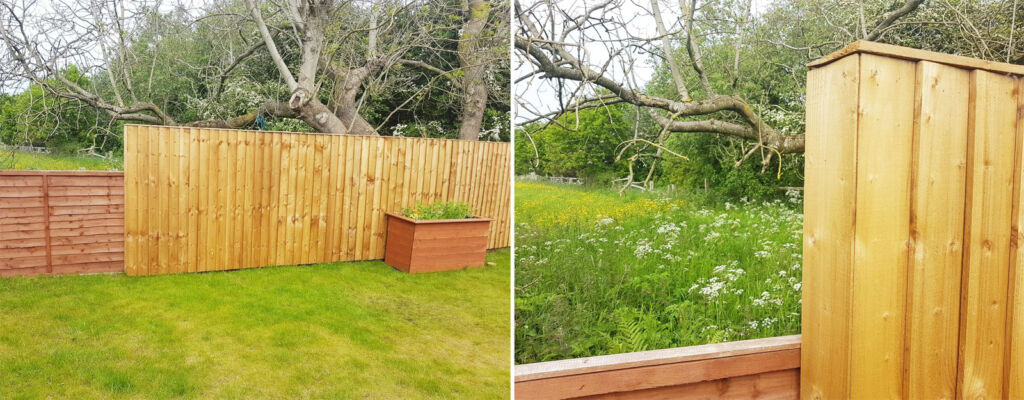
The property has 4ft 6″ fencing bordering the fields. Part of the way down, we decided to add a nature-focused section. We left the original fence in place and erected a taller boxed area where we could affix various insect and bird boxes onto the field facing side.
Before we added this new section, we cut two 10″ floor level holes in the existing fence that would allow access for hedgehogs. The other benefit of the boxed construction is it offers wildlife a safe place and protects them from nasty weather.
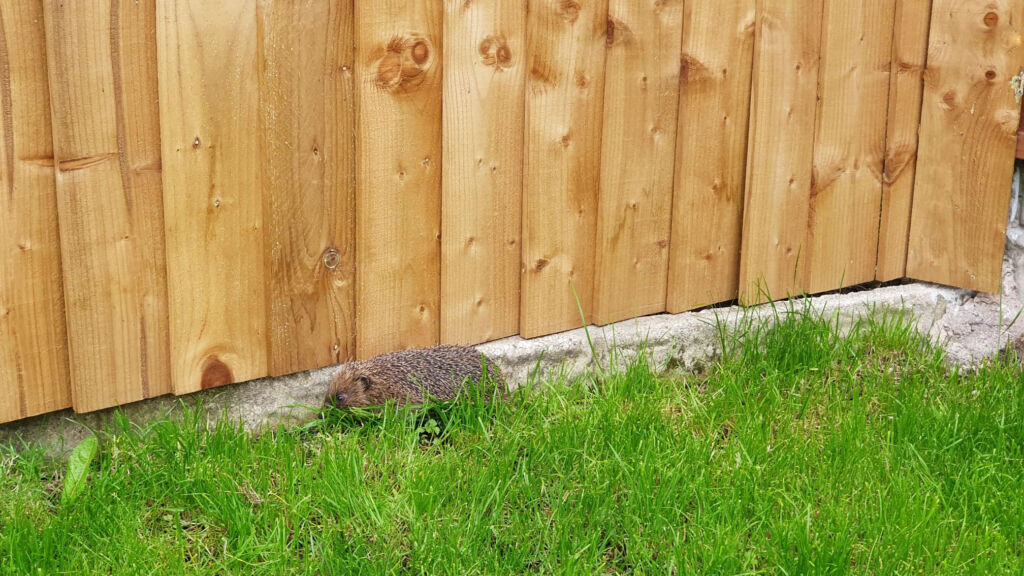
We’re excited to say that the plan worked. We are surrounded by birdsong, which some have said is almost deafening, and our wild-flower-filled planters are attracting all manner of insects including bees, butterflies, hoverflies and of course, ladybirds.
In addition to this, we are also being honoured with a constant flow of hedgehogs!
Being away from the distant drone of traffic and other forms of human-related noise has done wonders for our mental health. So much so, the lockdown restrictions had almost no impact on us and were viewed as little more than a minor inconvenience.
We’re now well past living a lifestyle that others expect us to have, maintaining properties where many of the rooms we had were classed as spare. We’ve found happiness living a simpler life, and are pleased to join the ever-growing throng who understand the importance of helping the wildlife.
Let’s conserve wildlife, one week at a time
“Plans to protect air and water, wilderness and wildlife, are in fact plans to protect man.” Stay true to Stewart Udall’s words, and celebrate Garden Wildlife Week whenever you have the opportunity.

![]()

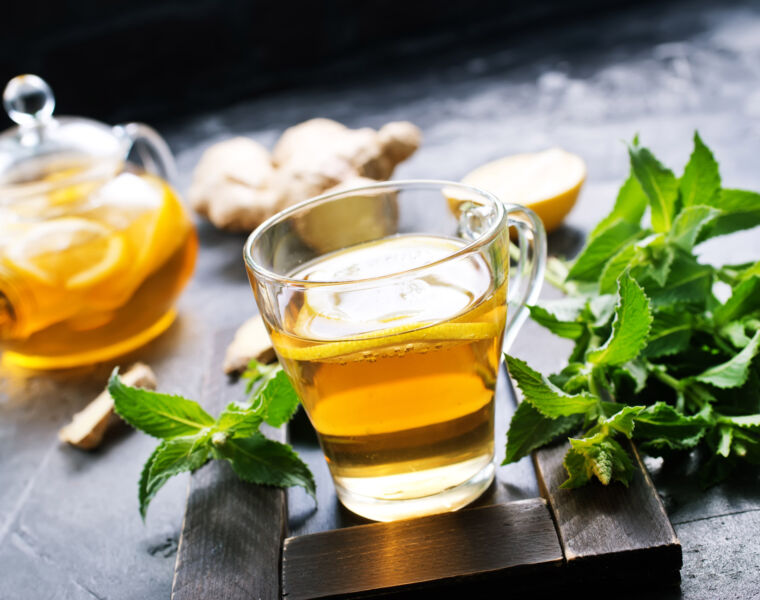


You must be logged in to post a comment.